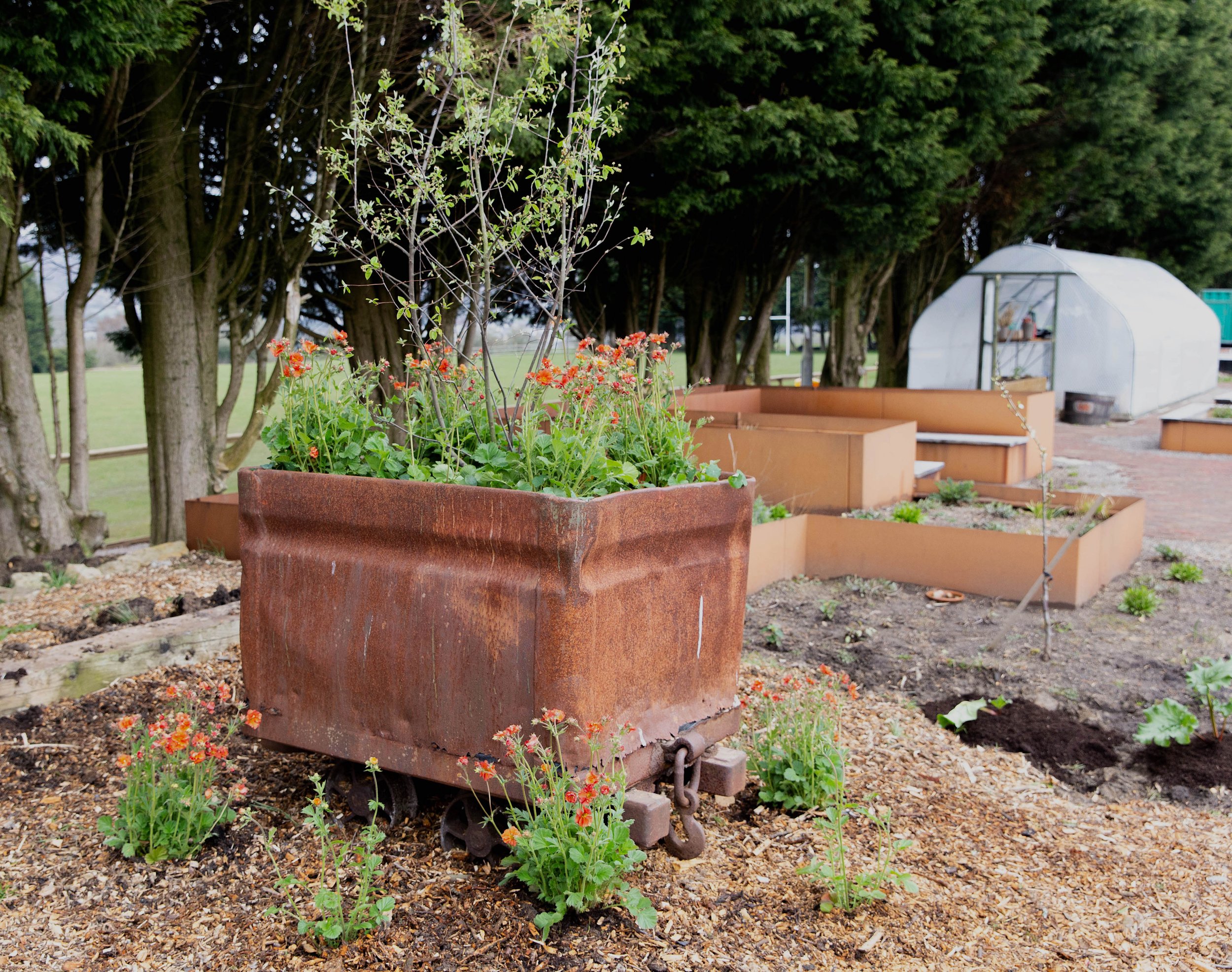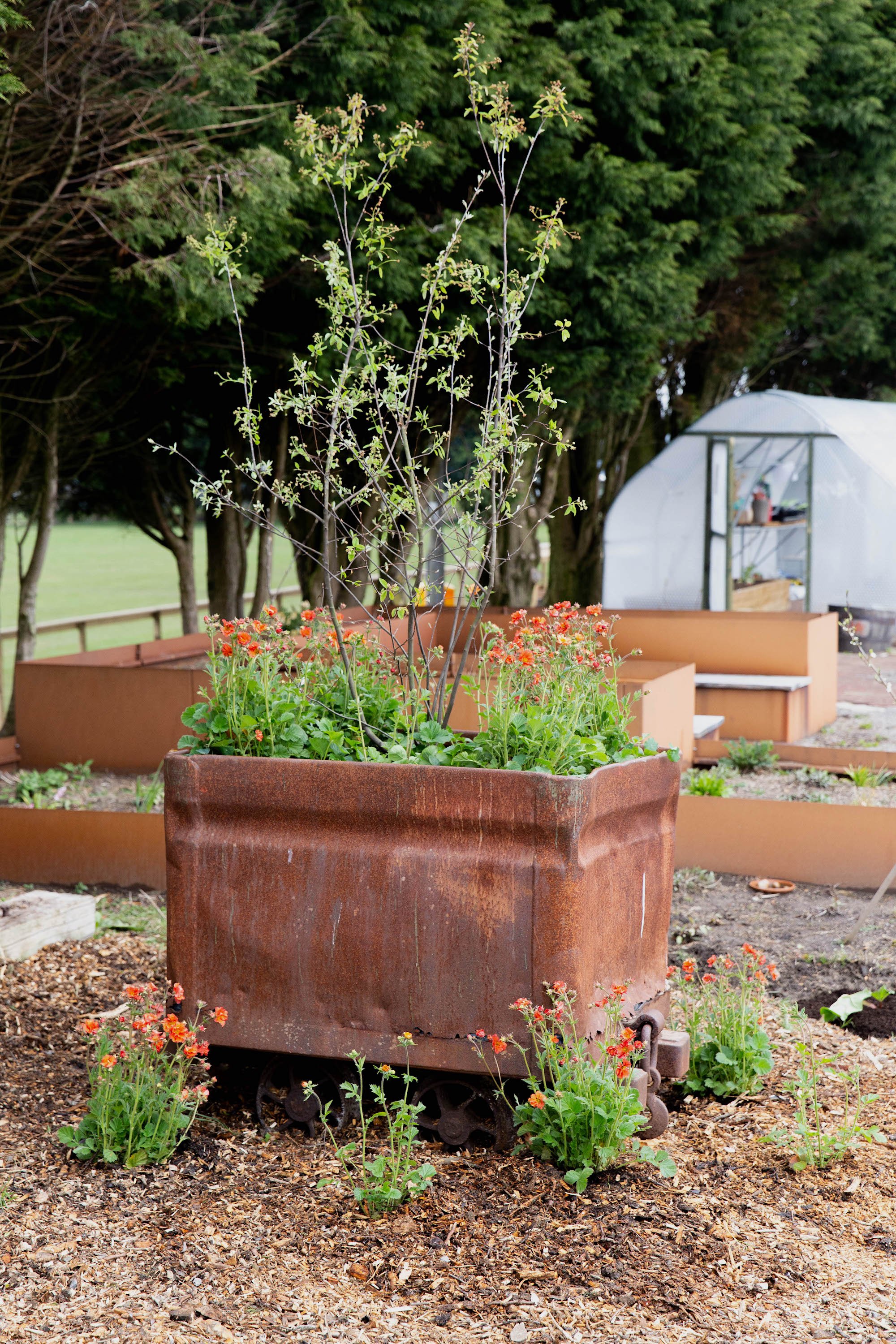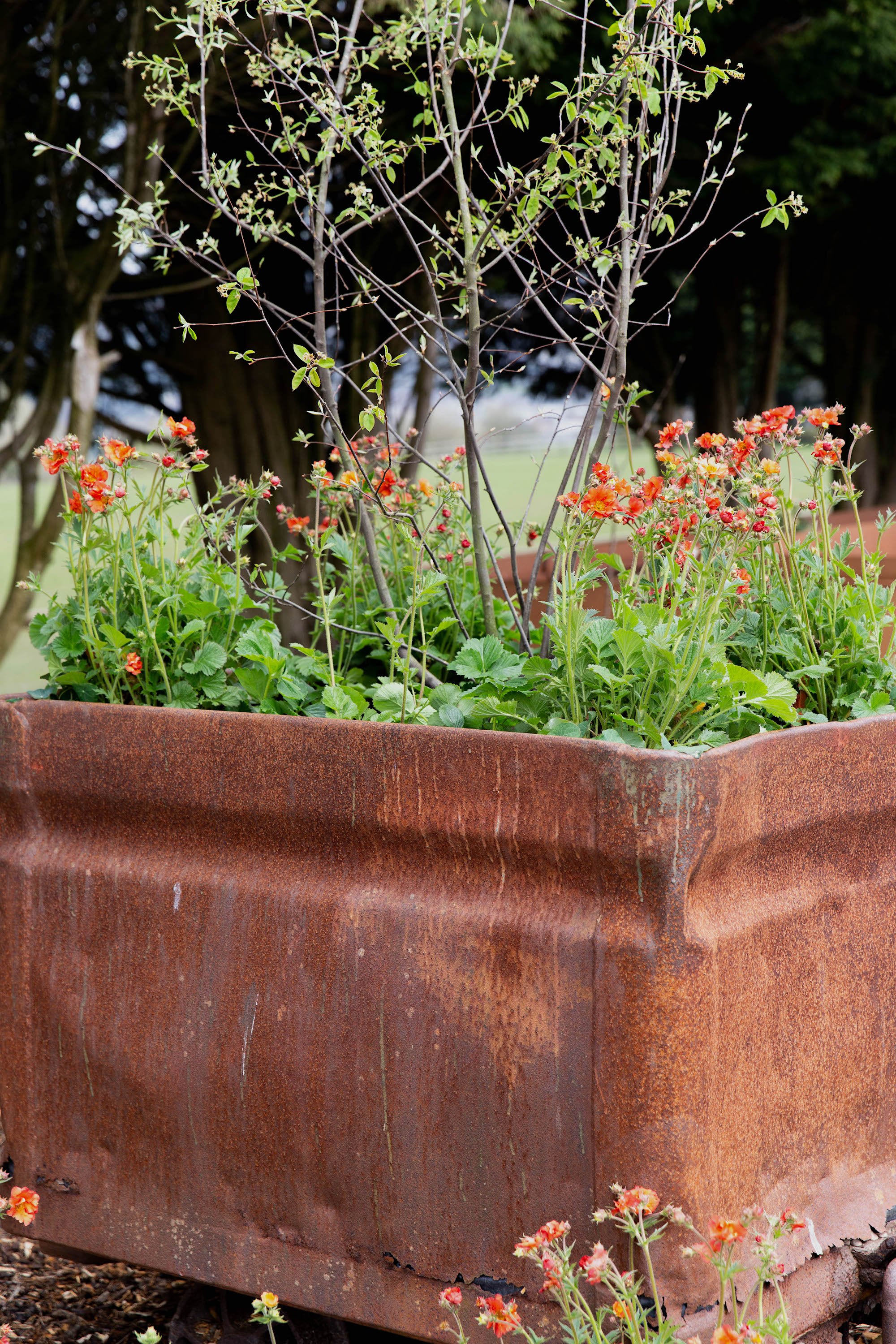Creating a coronation container
It’s the start of May and RHS National Gardening Week kicks off today.
This year, there is a special 2023 theme: create your own coronation container. National Gardening Week raises awareness of the importance of gardens and gardening to improve everyone’s quality of life, and we were really excited to get involved by creating our own coronation container at the RHS garden in Blaenavon.
It's exactly a year ago today that the garden was officially opened on the One Show. Situated at Forgeside Rugby Club, it was one of four community gardens created by the RHS last year – and designed by us!
It was really special to head back to create the new container and help to launch the start of this year’s National Gardening Week.
We wanted to create a low maintenance container, that tied in with the rest of the garden, provided seasonal interest and used reclaimed materials…
Here are a few notes on how we planted it, and some tips if you’re planning your own container planting…
The planted container with a small tree and flowers
Close up detail of the gorgeous rusty patina
Container
For the container itself, we’ve used an old coal cart from Big Pit. Some of our favourite salvaged pots to plant up are old water butts, and this was a step up from that! It’s an important piece of local history, that perfectly ties in with its surroundings, and the patina of rusted metal is just beautiful…
When planting any container, but especially something so large, it’s really important to ensure that there is adequate drainage. This had holes rusted into the bottom, which was perfect, but if you’re upcycling anything that doesn’t, you can just drill some holes underneath.
We lined the sides with old compost bags, to help with water retention, and make sure the compost didn’t escape out of the edges. We then put a couple of inches of gravel along the bottom – which will help with drainage and make sure the holes don’t get clogged up with compost. On top of that, we filled the container with peat free multi-purpose compost (we used Sylvagrow here, which is our go to for good quality peat free compost).
Planting
At the centre of the planting is a stunning Amelanchier x lamarckii. This is one of our favourite trees for a garden, which is perfect for growing in pots or in small spaces and is gorgeous throughout the year, It has beautiful white star-shaped blossom in the Spring, emerging on bare branches before the leaves appear. It produces small hazy purple fruits in Summer, which are great for wildlife, especially birds, and can also be turned into jams or used an alternative for sloes in sloe gin. And in Autumn, the leaves turn a deep red before falling. We’ve planted a multi-stem variety, which – as the name suggests – has many stems emerging from ground height, so makes a really attractive form for the tree, even during the Winter when the branches are bare.
Around the tree is a mixed planting of flowers and fruit. We’ve got some vibrant geums, which have deep orange-coloured flowers, tying in perfectly with the rust of the planter. We planted lots of geums in our garden last year, which have been thriving, so we were keen to use them here. We’ve gone for ‘Scarlett Tempest’ and ‘Totally Tangerine’ (though there are plenty of deep rusty orange or peach coloured geum flowers, so if you can’t find these two, there will be others!) Geums flower really early, bringing a welcome pop of colour in the Spring, and keep flowering for a long time. They’re popular with bees and other pollinators, and they seem to be relatively slug proof – an absolute essential for a damp Welsh garden!
The Blaenavon garden is planted with lots of edibles, so we continued that theme within the planter. Strawberries are planted around the edges, where they will cascade down the sides. These are interspersed with nasturtiums, which will also trail and soften the hard lines of the planter edges. Nasturtium leaves, stems, flowers and seeds are all edible, so this is a really great plant both to look good, and provide plenty of food…
We also sowed some calendula seeds in the greenhouse, which can be added to the container once they’ve germinated.
Planting around the base of a large container helps anchor it in its surroundings
We are huge fans of these gorgeous orange geums, that tie in perfectly with the rusty container
Care
This is in a community space, so we’ve planned carefully to make sure the container is as low-maintenance as possible. It’s a really large planter, which means it will retain water for longer, and the plants we’ve included are all fairly easy going.
Throughout the Summer, it will need regular watering and feeding during the growing months. A top up top dressing of compost once a year in the Autumn time will help keep the compost levels high (compost naturally breaks down and degrades over time) and will also add in some extra nutrition as the plant roots deplete what was originally there.
Some of the plants can be divided as they grow bigger: both the geums and strawberries can be divided up in the Autumn if required, which will give more plants that could be repositioned elsewhere in the garden.
And, of course, the strawberries will need harvesting once they start to produce fruit.
Situation
To anchor the planter in its surroundings, we’ve planted some more geums around the base. This is a great tip, both to help large planters blend in with their locations, and also to soften their lines before the trailing plants start to cascade over the edges…
We also added a new patch of Autumn raspberries to one side, and some clumps of rhubarb next to it as well…
Back at Blaenavon
It was so good to be back to visit the garden at Forgeside and check on it again. One of the best things about this garden is seeing how well loved it is by the community: the greenhouse was full of seedlings, and everything looked so well cared for. While we were there, a few families arrived. Some Mums with toddlers in tow came for a wander round the space, and another family came to check on their veg patch.
This is exactly what we had in mind when designing the garden, and it was really heart-warming to see the lush and well-loved space it has become. Phase two of the garden is finished, and they’re planning the next steps!
The RHS made a gorgeous video of the whole process:









